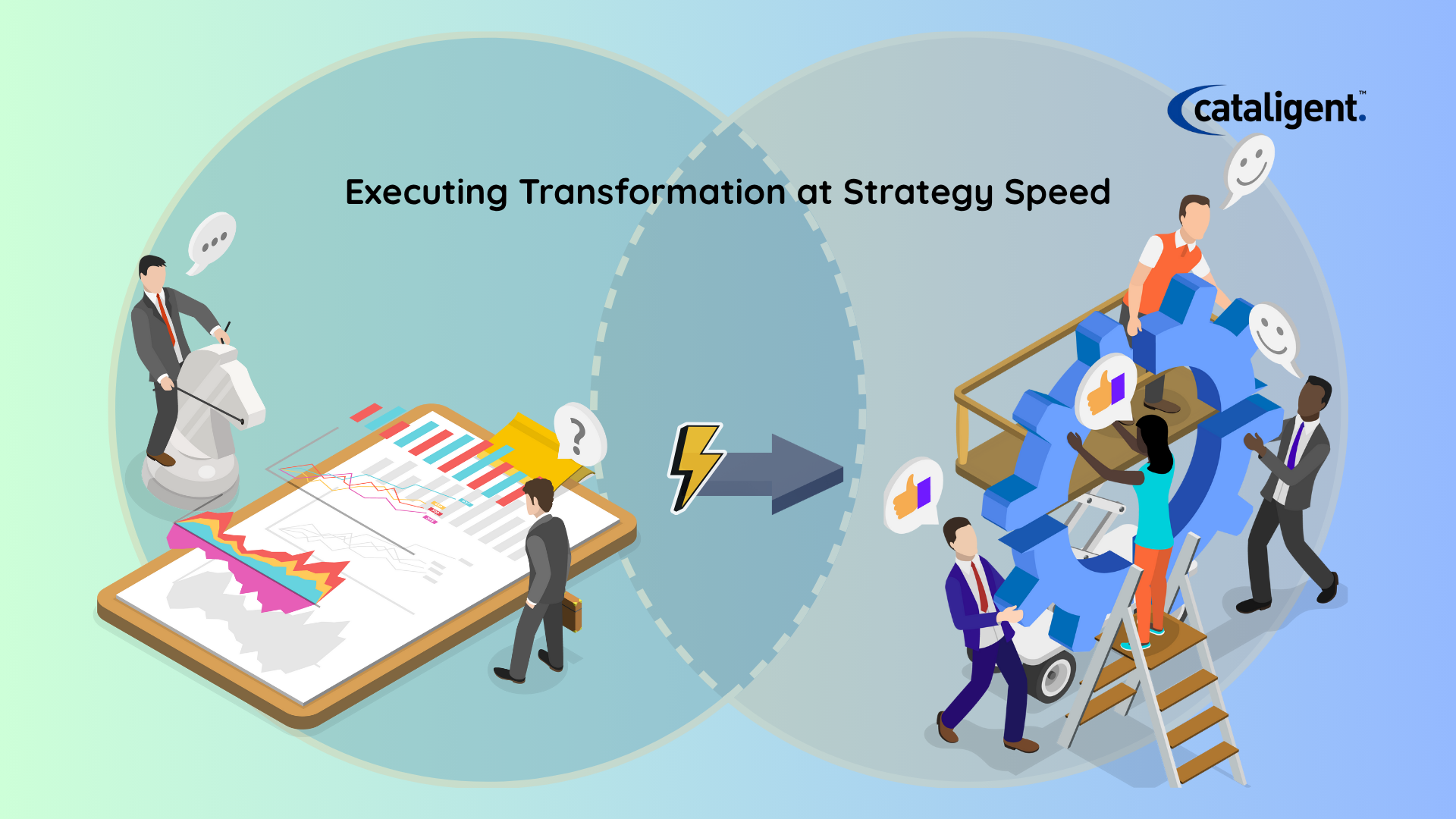What Does Execution at the Speed of Strategy Mean?
Many organizations create bold strategies, but those strategies often stall at execution. Projects are launched without alignment, resources are spread too thin, and initiatives lose momentum before delivering results. Execution at the speed of strategy is about building the capability to translate vision into action seamlessly, quickly, and with measurable outcomes.
This principle emphasizes the removal of lag between planning and doing. It demands that organizations create systems where strategic intent directly fuels execution in real time. Agility becomes more than a buzzword — it is the ability to shift priorities, reallocate resources, and adapt execution without losing sight of the strategic destination.
Why Agility in Execution is Critical
1. Strategies Without Execution Create Fragility
A strategy on paper is worthless if it cannot be acted upon. Execution provides resilience, enabling organizations to move beyond aspiration into measurable progress.
2. Markets Move Faster Than Annual Planning Cycles
By the time annual strategies are cascaded into projects, markets may have already shifted. Execution aligned to real-time strategy keeps organizations relevant.
3. Resources Must Follow Priorities, Not Politics
In many organizations, resources flow toward the loudest voice rather than the greatest value. Agile execution ensures that time, capital, and talent are continually reallocated to initiatives that matter most.
4. Customer Expectations Require Responsiveness
Customers no longer wait months for businesses to adapt. They expect improvements and innovations quickly. Agility in execution ensures companies respond with speed.
5. Transformation Success Relies on Speed of Implementation
Digital, operational, or cultural transformation initiatives fail when implementation is slow. Momentum fuels adoption and engagement; without it, transformation loses credibility.
How to Redefine Agility in Transformation
1. Integrate Strategy with Execution in Real Time
The first step is creating visibility across the organization. Leaders need platforms that link strategic goals with the projects and teams delivering them, ensuring every initiative is aligned with business priorities.
2. Establish Agile Portfolio Management
Instead of rigid long-term project lists, organizations should continuously evaluate and reprioritize portfolios. Agile portfolio management ensures focus remains on initiatives that deliver maximum impact.
3. Build Rapid Feedback Loops
Execution should never be set-and-forget. Feedback loops that measure progress against strategic goals in real time allow for quick pivots when conditions change.
4. Empower Decision-Makers at All Levels
Agility requires decentralization. Empowering teams and middle managers with data and authority allows faster responses while keeping strategy intact.
5. Foster a Culture of Accountability and Transparency
Execution moves faster when accountability is clear. Transparent metrics and dashboards create shared ownership and keep momentum high.
6. Balance Speed with Governance
Agility is not chaos. Simplified governance structures ensure that speed does not compromise accountability, risk management, or compliance.
Insights into Agile Execution Practices
- Dynamic Resource Allocation: Moving resources from underperforming initiatives to high-value ones keeps execution focused on outcomes.
- Scenario-Based Planning: Instead of fixed strategies, organizations prepare multiple scenarios and can switch between them quickly.
- Digital Dashboards for Visibility: Real-time data on project health, costs, and strategic alignment help leaders make decisions without delays.
- Continuous Workforce Engagement: Execution succeeds when employees understand the “why” behind initiatives. Ongoing communication and involvement foster commitment.
- Learning Through Iteration: Agile execution encourages trying, testing, and learning rather than waiting for perfect solutions. This keeps organizations ahead of competitors who move slowly.
Real-World Examples of Execution at the Speed of Strategy
- Technology Enterprise: Shifted from annual planning to quarterly portfolio reviews, enabling resource reallocation that doubled innovation throughput without increasing budgets.
- Healthcare Provider: Used real-time dashboards to monitor strategic initiatives, cutting project overruns by 40% and improving delivery consistency.
- Financial Services Firm: Empowered teams with decision-making authority and agile governance, accelerating transformation initiatives by six months compared to traditional models.
- Retail Organization: Implemented dynamic resource allocation during market disruptions, ensuring continuity in supply chains and faster response to consumer demand.
According to insights from Sciforma, true business success lies in mastering strategic execution and transformation management. It’s not just about creating plans, it’s about bringing them to life through clear communication, goal alignment, and agile leadership. By tracking meaningful KPIs, nurturing cultural alignment, and adapting strategies in real time, organizations can transform challenges into opportunities. Those that integrate strategic execution with transformation management in this rapidly changing world, don’t just survive—they lead with clarity, innovation, and sustained growth.
🚀 Must Discover how realigning strategy with disciplined agility helps businesses thrive amid disruption and turn transformation into a continuous competitive advantage.
Let’s see how our tools empower leaders to execute these strategies seamlessly, optimize performance, and sustain growth across every stage of transformation.
How Cataligent Helps
Cataligent bridges the gap between strategy and execution, enabling organizations to operate with true agility:
- CAT4 Framework: Connects strategy and execution in real time, providing leaders with visibility into progress and alignment.
- Agile Portfolio and Program Management: Ensures resources are focused on high-impact initiatives, reprioritized continuously to reflect changing conditions.
- Governance Simplification: Streamlines decision-making without sacrificing accountability, allowing for speed and compliance.
- Change Management Support: Builds engagement across the workforce, ensuring rapid adoption of new processes and systems.
- Operational Efficiency and Cost Optimization: Removes bottlenecks and reallocates resources effectively to maintain momentum.
Strategic visions lose power when execution lags. To thrive in competitive, fast-changing markets, organizations must build the discipline of executing at the speed of strategy. Agility is not about moving faster in isolation; it is about moving faster with alignment and purpose.
Cataligent delivers the frameworks, tools, and expertise needed to embed agile execution into your organization. With services spanning strategy-to-execution integration, agile portfolio management, governance simplification, change management, and operational efficiency, Cataligent enables organizations to turn strategic intent into measurable impact.
If your strategies are bold but your execution struggles to keep pace, it is time to redefine agility with Cataligent. Together, we can transform execution into a strategic weapon that sustains momentum, strengthens resilience, and creates lasting competitive advantage.

